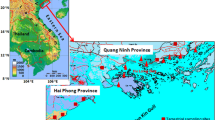Abstract
The European Commission Joint Research Centre offers scientific expertise and competences from a wide range of disciplines in support of almost all EU policy areas. Originally established under the Euratom Treaty, a proportion of the JRC work is still in the nuclear field. In particular, in the framework of the operation and pre-decommissioning activities of its nuclear installations, the JRC-Ispra (Italy) has implemented an environmental monitoring program in the area surrounding the site to verify the radiological impact on the public and on the environment. In fact, due to the nuclear activities on site, the local population is considered to be more exposed to radiological risks than the rest of the public. Measurements types and frequencies in the monitoring program are defined to demonstrate that releases of airborne and liquid radioactive effluents into the environment comply with authorized discharge limits and any other regulatory requirements: the effective dose expected to be incurred by the reference person is here fixed of the order of 10 \({\upmu }\)Sv in a year. Since this dose value is not directly comparable with the radiometric measurements carried out on environmental and food samples, appropriate derived levels have been defined in terms of radionuclides concentration. The direct comparison between the radiometric measurements and the derived levels enables prompt investigations or actions in order to ensure compliance with the legal constraints. This work describes the criteria adopted and the calculation models applied for the definition the derived levels for the environmental monitoring network of the JRC-Ispra.


Similar content being viewed by others
Data availability
There is no associated data with the present publication.
References
Decreto Legislativo 31 luglio 2020, n. 101 Attuazione della direttiva 2013/59/Euratom, che stabilisce norme fondamentali di sicurezza relative alla protezione contro i pericoli derivanti dall'esposizione alle radiazioni ionizzanti, e che abroga le direttive 89/618/Euratom, 90/641/Euratom, 96/29/Euratom, 97/43/Euratom e 2003/122/Euratom e riordino della normativa di settore in attuazione dell'articolo 20, comma 1, lettera a), della legge 4 ottobre 2019, n. 117. (20G00121) and subsequent amendments and additions
ISPRA, Manuali e Linee Guida 83/2012 “Linee guida per il monitoraggio della radioattività”
Decreto Legislativo 15 febbraio 2016, n. 28 Attuazione della direttiva 2013/51/EURATOM del Consiglio, del 22 ottobre 2013, che stabilisce requisiti per la tutela della salute della popolazione relativamente alle sostanze radioattive presenti nelle acque destinate al consumo umano. (16G00036) (GU Serie Generale n.55 del 07-03-2016)
ICRP 72—Age-dependent doses to members of the public from intake of radionuclides
ICRP 119—Compendium of dose coefficients based on ICRP 60
ICRP 134—Occupational Intakes of Radionuclides: Part 2
2000 LLNL Environmental Report—Appendix A—Methods of dose calculations
ICRP 89—Basic Anatomical and Physiological Data for Use in Radiological Protection
CEVaD Emergenze nucleari e radiologiche 57/2010—ISPRA
2000/473/Euratom: Commission recommendation of 8 June 2000 on the application of Article 36 of the Euratom Treaty concerning the monitoring of the levels of radioactivity in the environment for the purpose of assessing the exposure of the population as a whole (notified under document number C(2000) 1299)
IAEA Safety Reports Series n. 19—Generic Models for use in assessing the impact of discharges of radioactive substances to the environment
L’indagine nazionale sui consumi alimentari in Italia: INRAN-SCAI 2005-06 - CREA
Radiation Protection 87—Radiological protection principles for urgent countermeasures to protect the public in the event of accidental releases of radioactive material, ISBN 92-827-5321-2
Commission Recommendation of 14 April 2003 on the protection and information of the public with regard to exposure resulting from the continued radioactive caesium contamination of certain wild food products as a consequence of the accident at the Chernobyl nuclear power station (notified under document number C(2003) 510)
Author information
Authors and Affiliations
Corresponding author
Rights and permissions
Springer Nature or its licensor (e.g. a society or other partner) holds exclusive rights to this article under a publishing agreement with the author(s) or other rightsholder(s); author self-archiving of the accepted manuscript version of this article is solely governed by the terms of such publishing agreement and applicable law.
About this article
Cite this article
Cecchini, M., Iurlaro, G., Gueli, F. et al. Determination of derived levels for radioactivity concentrations in foodstuff and environmental matrices at the Joint Research Centre (JRC-Ispra). Eur. Phys. J. Plus 139, 414 (2024). https://doi.org/10.1140/epjp/s13360-024-05187-y
Received:
Accepted:
Published:
DOI: https://doi.org/10.1140/epjp/s13360-024-05187-y




